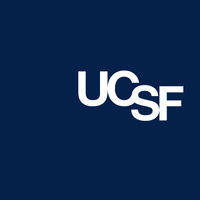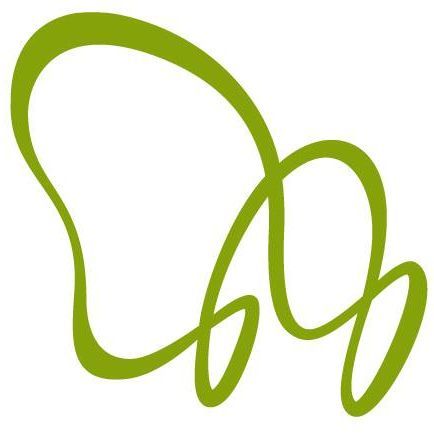预约演示
更新于:2025-05-07
ENaCα
更新于:2025-05-07
基本信息
别名 Alpha-ENaC、Alpha-NaCH、Amiloride-sensitive sodium channel subunit alpha + [9] |
简介 This is one of the three pore-forming subunits of the heterotrimeric epithelial sodium channel (ENaC), a critical regulator of sodium balance and fluid homeostasis (PubMed:30251954, PubMed:32729833, PubMed:8023962, PubMed:8278374, PubMed:9792722). ENaC operates in epithelial tissues, where it mediates the electrodiffusion of sodium ions from extracellular fluid through the apical membrane of cells, with water following osmotically (PubMed:24124190, PubMed:28710092, PubMed:8278374). It plays a key role in maintaining sodium homeostasis through electrogenic sodium reabsorption in the kidneys (PubMed:12107247). Additionally, ENaC is essential for airway surface liquid homeostasis, which is crucial for proper mucus clearance (PubMed:24124190, PubMed:28710092).
Not functional. |
关联
6
项与 ENaCα 相关的药物靶点 |
作用机制 ENaCα抑制剂 |
在研机构 |
原研机构 |
非在研适应症- |
最高研发阶段批准上市 |
首次获批国家/地区 美国 |
首次获批日期1981-10-05 |
靶点 |
作用机制 ENaCα抑制剂 |
非在研适应症- |
最高研发阶段临床阶段不明 |
首次获批国家/地区- |
首次获批日期1800-01-20 |
作用机制 ENaCα抑制剂 [+2] |
在研适应症 |
非在研适应症 |
最高研发阶段临床前 |
首次获批国家/地区- |
首次获批日期1800-01-20 |
61
项与 ENaCα 相关的临床试验NCT06224673
Phase II Open-label Study of ARX788 (Anti-HER2 Antibody Drug Conjugate (ADC)) for Patients With HER2-low Locally Advanced Unresectable or Metastatic Breast Cancer
This phase II trial tests how well ARX788 works in treating patients diagnosed with HER2-low, locally advanced unresectable or metastatic breast cancer. ARX788 is an antibody-drug conjugate (ADC) that is given by infusion (diluted and injected slowly into veins). Antibodies are proteins which are naturally produced by the body's immune system to help fight infections. ARX788 consists of antibodies that have been attached to a toxin that has the potential to kill cancer cells. ARX788 sticks to a protein called human epidermal growth factor receptor (HER2), which is found on some breast cancer cells. Giving ARX788 may be safe and effective in treating patients with HER2-low locally advanced unresectable metastatic breast cancer.
开始日期2025-04-15 |
申办/合作机构 |
NCT06923709
Beneficial Effect of Amiloride on Progression of Chronic Kidney Disease
This is a randomized, placebo-controlled, double-blinded crossover trial testing the effects of amiloride in patients with chronic kidney disease (CKD) and proteinuria.
In CKD with proteinuria, there is aberrant filtration of serine proteases and complement precursors into the tubular lumen. The interaction of these factors leads to proinflammatory complement activation, which may promote inflammation, opsonization, and formation of the membrane-attack complex, causing cell injury.
With the aim of preserving kidney function, reducing cardiovascular morbidity, and delaying renal replacement therapy in CKD, this study tests whether amiloride (10 mg/day) protects the filtration barrier, lowers albuminuria, and mitigates kidney inflammation through urokinase inhibition, independent of blood pressure effects.
Participants are randomized to receive amiloride (10 mg/day) or placebo for one week, with a 2-3-week washout period in between. Blood and urine samples are collected before and after each treatment period. Additionally, ECG, body composition measurements, blood pressure, and body weight are monitored.
The primary outcome measures are urinary C3a, soluble C5-9 (sTCC/MAC), and kidney injury biomarkers KIM-1 and NGAL. Secondary endpoints include the urinary albumin/creatinine ratio, protein/creatinine ratio, and blood pressure.
In CKD with proteinuria, there is aberrant filtration of serine proteases and complement precursors into the tubular lumen. The interaction of these factors leads to proinflammatory complement activation, which may promote inflammation, opsonization, and formation of the membrane-attack complex, causing cell injury.
With the aim of preserving kidney function, reducing cardiovascular morbidity, and delaying renal replacement therapy in CKD, this study tests whether amiloride (10 mg/day) protects the filtration barrier, lowers albuminuria, and mitigates kidney inflammation through urokinase inhibition, independent of blood pressure effects.
Participants are randomized to receive amiloride (10 mg/day) or placebo for one week, with a 2-3-week washout period in between. Blood and urine samples are collected before and after each treatment period. Additionally, ECG, body composition measurements, blood pressure, and body weight are monitored.
The primary outcome measures are urinary C3a, soluble C5-9 (sTCC/MAC), and kidney injury biomarkers KIM-1 and NGAL. Secondary endpoints include the urinary albumin/creatinine ratio, protein/creatinine ratio, and blood pressure.
开始日期2024-10-10 |
申办/合作机构 |
NCT05753059
Mechanisms of Diuretic Resistance in Heart Failure, Aim 2
Randomized placebo-controlled, double-blind, double-dummy, crossover design testing combinations placebo/placebo, bendroflumethiazide/placebo, amiloride/placebo, and bendroflumethiazide/amiloride added to bumetanide.
开始日期2023-08-10 |
申办/合作机构  Yale University Yale University [+1] |
100 项与 ENaCα 相关的临床结果
登录后查看更多信息
100 项与 ENaCα 相关的转化医学
登录后查看更多信息
0 项与 ENaCα 相关的专利(医药)
登录后查看更多信息
738
项与 ENaCα 相关的文献(医药)2025-06-01·Breast Cancer Research and Treatment
Stable overexpression of the epithelial sodium channel alpha subunit reduces migration and proliferation in breast cancer cells
Article
作者: Cunliffe, Heather E ; McQueen, Sarah R A ; McDonald, Fiona J ; Chin, Wey Qi
2025-05-01·Animal Bioscience
Dietary sodium sulfate supplementation improves eggshell quality, uterine ion transportation and glycosaminoglycan synthesis in laying hens
Article
作者: Dai, Dong ; Zhou, Jian-Min ; Zhang, Hai-Jun ; Fu, Kai-bo ; Fu, Kai-Bo ; Wang, Jing ; Wu, Shu-geng ; Zhang, Hai-jun ; Wu, Shu-Geng ; Zhou, Jian-min ; Qi, Guang-hai ; Qi, Guang-Hai
2025-04-01·American Journal of Respiratory Cell and Molecular Biology
Endothelial ENaC-α Restrains Oxidative Stress in Lung Capillaries in Murine Pneumococcal Pneumonia–associated Acute Lung Injury
Article
作者: Gonsalvez, Graydon ; Stansfield, Brian K. ; Ahn, Won Mo ; Davis, William B. ; Maishan, Mazharul ; Hamacher, Jürg ; Matthay, Michael A. ; Verin, Alexander D. ; Pace, Betty S. ; Hummler, Edith ; Chakraborty, Trinad ; Hudel, Martina ; Romero, Maritza J. ; Sridhar, Supriya ; Lucas, Rudolf ; Bogdanov, Vladimir Y. ; Enkhbaatar, Perenlei ; Haigh, Stephen ; Gonzales, Joyce ; Csanyi, Gabor ; Zaidi, Yusra ; Eaton, Douglas C. ; Neptune, Enid R. ; Fulton, David J. R. ; Yue, Qian ; Su, Yunchao ; Huo, Yuqing
分析
对领域进行一次全面的分析。
登录
或

Eureka LS:
全新生物医药AI Agent 覆盖科研全链路,让突破性发现快人一步
立即开始免费试用!
智慧芽新药情报库是智慧芽专为生命科学人士构建的基于AI的创新药情报平台,助您全方位提升您的研发与决策效率。
立即开始数据试用!
智慧芽新药库数据也通过智慧芽数据服务平台,以API或者数据包形式对外开放,助您更加充分利用智慧芽新药情报信息。
生物序列数据库
生物药研发创新
免费使用
化学结构数据库
小分子化药研发创新
免费使用





